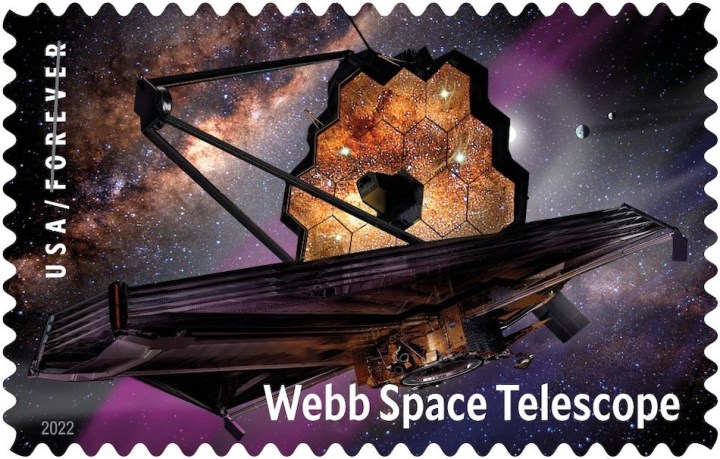
The excitement surrounding the James Webb Space Telescope ramped up a notch earlier this month when NASA shared the first incredible images from the next-generation observatory.
Now the United States Postal Service (USPS) is getting in on the action with the imminent launch of a specially designed stamp to celebrate what is the most powerful space telescope ever built.
After announcing the stamp earlier this year, the USPS this week revealed the pre-order date for the new James Webb Space Telescope Forever stamp: August 8. Fans of stamps or space (or both!) simply need to visit the USPS’s online store to place their order.
A month later, on September 8, the stamp will go on general sale.
The image on the stamp features an artist’s digitally created depiction of the telescope set against what the USPS described as “a dazzling starscape.”
It was designed by art director Derry Noyes using existing art created by James Vaughan and an image from NASA and the Space Telescope Science Institute. The design shows the telescope’s 18 gold-coated segments, which together create the observatory’s stunning 21-foot mirror lens.
The image of a star (below) displayed at the top of a sheet of the stamps was captured by the Webb telescope during a test phase early on in the mission.

After launching from U.S. soil in December 2021, the James Webb Space Telescope is now in a solar orbit about a million miles from Earth.
The cutting-edge technology aboard the telescope enables it to peer deeper into space than any telescope that has gone before, with the gathered data expected to help scientists learn more about the origins of the universe, while also pinpointing planets similar to Earth that could harbor life.
Editors' Recommendations
- James Webb observes extremely hot exoplanet with 5,000 mph winds
- James Webb images capture the galactic winds of newborn stars
- See what James Webb and Hubble are observing right now with this tool
- NASA switches SpaceX’s Crew-8 launch date again
- See 19 gorgeous face-on spiral galaxies in new James Webb data


